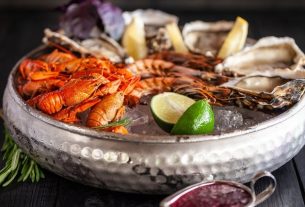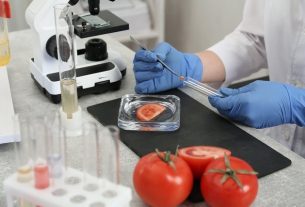Trans fat is a type of vegetable fat created by industrial processes and is found in ultra-processed foods such as cookies, ready-made cakes, margarine, frozen pizzas, instant pasta and ice cream.
Furthermore, trans fat is also produced naturally in the intestines of some animals and is therefore also present in small quantities in foods such as beef, cheese, milk and butter.
Trans fat is typically used by industry to extend shelf life, as well as providing pleasant flavor and texture to foods. However, the consumption of trans fat increases the risk of diseases such as diabetes, atherosclerosis and cancer.

List of foods rich in trans fat
The following table shows the amount of trans fat in every 100g of some foods:
Natural or lightly processed foods, such as beef, pork, cheese, butter and milk, also contain small amounts of trans fat.
Recommended quantity
The World Health Organization suggests that daily trans fat consumption should be up to 1% of the total caloric value of the diet. For an 1800 calorie diet, trans fat intake should be up to 2 g, for example.
How to know if food has trans fat
To find out if a food has trans fat, you should always check the product’s nutritional information table. See how to read food labels.
In addition, it is also important to check the list of food ingredients, looking for synonyms for trans fat, such as hydrogenated fat, hydrogenated vegetable fat, partially hydrogenated vegetable oil or interesterified fat.
See, in the following video, how to read food labels to be healthier:
Why trans fat is bad for your health
Trans fat is bad for your health because it promotes insulin resistance and inflammation in the body.
Thus, the consumption of trans fat increases the levels of “bad” cholesterol, LDL, while decreasing the levels of “good” cholesterol, HDL, in the blood, favoring the emergence of diseases such as stroke, atherosclerosis, heart attack, type 2 diabetes and cancer.
Difference between trans fat and saturated fat
Saturated fat is a type of fat that, unlike trans fat, can be found in natural products such as beef, eggs, milk, coconuts and nuts.
Excessive consumption of saturated fat can also facilitate the emergence of diseases, such as obesity, heart attack, atherosclerosis and high blood pressure. However, the daily recommendation for saturated fat is higher than that recommended for trans fat, corresponding to up to 10% of the total caloric value of the diet.
Bibliography
- MICHELS Natalie et al. Dietary trans-fatty acid intake in relation to cancer risk: a systematic review and meta-analysis. Nutrition Reviews. Vol.79. 7.ed; 758-776, 2020
- MICHELS, Natalie et al. Dietary Trans Fatty Acid Intake in Relation to Cancer Risk: A Systematic Review. Journal of Global Oncology. Vol.4. 2018
- UNITED STATES DEPARTMENT OF AGRICULTURE. Food Data Central. Available at: <https://fdc.nal.usda.gov/ndb/search/list>. Accessed on Nov 29, 2022
- MEDLINE PLUS. Facts about trans fats. Available at: <https://medlineplus.gov/ency/patientinstructions/000786.htm>. Accessed on Nov 29, 2022
- AMERICAN HEART ASSOCIATION. Trans Fats. Disponível em: <https://www.heart.org/en/healthy-living/healthy-eating/eat-smart/fats/trans-fat>. Acesso em 29 nov 2022
- WORLD ORGANIZATION DIET. Fact sheet: healthy diet. Disponível em: <https://www.who.int/news-room/fact-sheets/detail/healthy-diet#:~:text=Intake%20of%20saturated%20fats%20should,4%2C%205%2C%206>. Acesso em 29 nov 2022

Sign up for our newsletter and stay up to date with exclusive news
that can transform your routine!
Warning: Undefined array key "title" in /home/storelat/public_html/wp-content/plugins/link-whisper-premium/templates/frontend/related-posts.php on line 12
Warning: Undefined array key "title_tag" in /home/storelat/public_html/wp-content/plugins/link-whisper-premium/templates/frontend/related-posts.php on line 13





